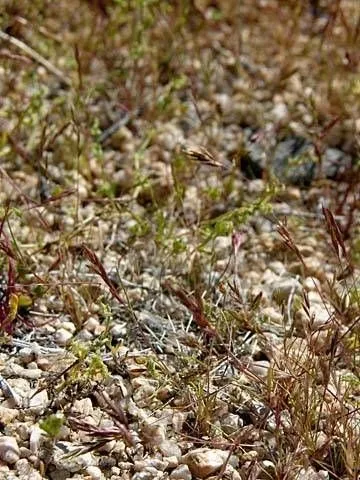
Author: Nees
Bibliography: Fl. Afr. Austral. Ill.: 422 (1841)
Year: 1841
Status: accepted
Rank: species
Genus: Schismus
Vegetable: False
Observations: E. & S. Medit. to Mongolia and Ethiopia
Arabian grass, scientifically known as Schismus arabicus, is a distinguished species within the Poaceae family. First described by Nees in 1841 in ‘Flora African Austral. Illustrata’, this resilient grass has carved out a niche for itself across a broad geographical range. Its native habitat stretches across the Eastern and Southern Mediterranean regions, reaching as far as Mongolia and Ethiopia.
Known for its adaptability, Arabian grass thrives in diverse conditions, which underscores its widespread distribution. The plant’s presence from the Mediterranean basin to the arid expanses of Mongolia and Ethiopia demonstrates its ability to endure varying climatic conditions, from semi-arid to temperate zones. This adaptability not only highlights its ecological versatility but also its potential utility in soil stabilization and as a forage plant in regions where more moisture-dependent grasses might fail.
Schismus arabicus is characterized by its slender, often tufted growth habit. It generally prefers sandy soils, which are abundant in its native and extended regions. The grass is noted for its resilience in poor soil conditions, making it a valuable plant for soil conservation efforts. Its ability to establish roots in less fertile soils helps prevent erosion and supports the ecosystem by providing ground cover where little else will grow.
This species is also noteworthy for its role in the local biodiversity. As part of the Poaceae family, Arabian grass contributes to the diet of various herbivores in these regions, serving as a native forage crop. Moreover, it plays a role in local traditional uses and agricultural practices, particularly in regions where the grass is more abundant.
In conclusion, Arabian grass (Schismus arabicus) embodies a remarkable example of plant resilience and adaptability. Its extensive geographic range and ecological contributions make it a subject of interest in both botanical studies and environmental management practices.
Eng: arabian grass, arabian schismus
En: Arabian grass, Arabian schismus, Arabian Mediterranean Grass
He: שסיע ערבי
Taken Feb 12, 2016 by EOL − reillycat07 (cc-by-nc)
Taken Mar 14, 2016 by EOL − Donna Pomeroy (cc-by-nc)
Taken Jan 1, 1900 by EOL − Soreng, R.J. (cc-by-nc-sa)
© copyright of the Board of Trustees of the Royal Botanic Gardens, Kew.
© copyright of the Board of Trustees of the Royal Botanic Gardens, Kew.
© copyright of the Board of Trustees of the Royal Botanic Gardens, Kew.
Growth habit>: Graminoid
Family: Myrtaceae Author: (F.Muell.) K.D.Hill & L.A.S.Johnson Bibliography: Telopea 6: 402 (1995) Year: 1995 Status:…
Family: Rubiaceae Author: Pierre ex A.Froehner Bibliography: Notizbl. Bot. Gart. Berlin-Dahlem 1: 237 (1897) Year:…
Family: Sapindaceae Author: Koidz. Bibliography: J. Coll. Sci. Imp. Univ. Tokyo 32(1): 38 (1911) Year:…
Family: Asteraceae Author: A.Gray Bibliography: Pacif. Railr. Rep.: 107 (1857) Year: 1857 Status: accepted Rank:…
Family: Fabaceae Author: Medik. Bibliography: Vorles. Churpfälz. Phys.-Ökon. Ges. 2: 398 (1787) Year: 1787 Status:…
Family: Aspleniaceae Author: (Cav.) Alston Bibliography: Bull. Misc. Inform. Kew 1932: 309 (1932) Year: 1932…